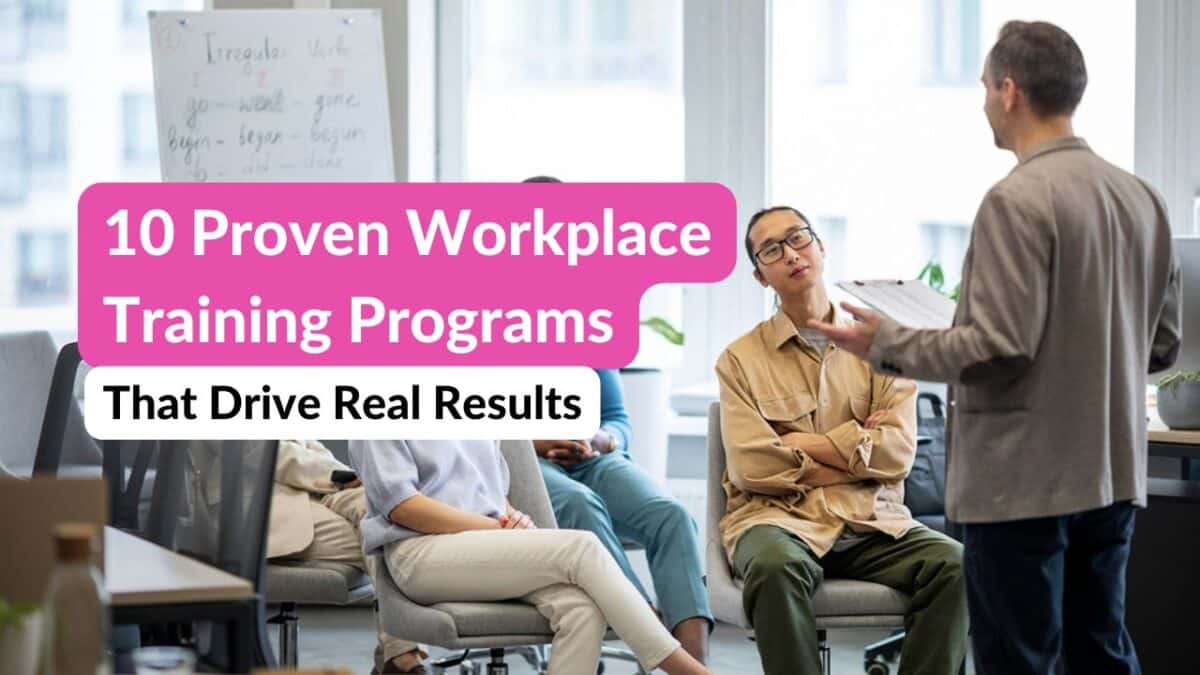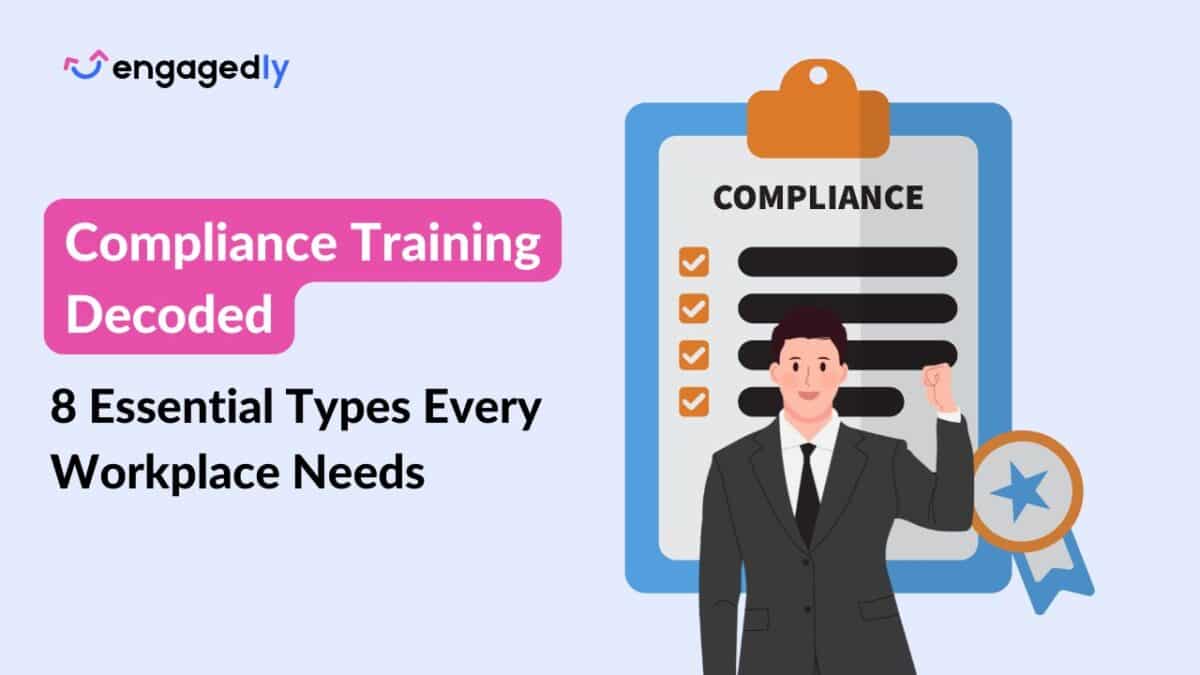Struggling to keep your team skilled and up-to-date in today’s fast-moving business world? You’re not alone. Many businesses face the challenge of delivering consistent, effective training without overwhelming resources or time. This is where a Learning Management System (LMS) becomes a game-changer.
An LMS can simplify and streamline employee development, but with so many options, how do you know which one has the features you truly need? In this guide, we’ll uncover the top LMS functions to tackle your training challenges and ensure your programs run smoothly. Let’s dive in!
Do You Know?
- The Learning Management System (LMS) market is projected to reach $51.9 billion by 2028, growing at a CAGR of 18.6% (Source: MarketsandMarkets).
- The mobile learning market is expected to hit $76.08 billion in 2024 and grow to $230.12 billion by 2029, with a CAGR of 24.78% (Source: Mordor Intelligence).
- 59% of companies have adopted Bring Your Own Device (BYOD) policies, and 67% of employees use personal devices at work (Source: Mordor Intelligence).
1. User-Friendly Interface: Because Nobody Likes a Clunky Dashboard
Ever used a tool that felt like solving a Rubik’s Cube blindfolded? That’s what a poorly designed LMS feels like. A user-friendly interface (UI) and seamless user experience (UX) are essential to make navigation intuitive and straightforward, eliminating frustration for both employees and administrators.
When employees log in, the LMS should feel effortless—not like it’s demanding their undivided attention just to figure out the basics. A modern, clean dashboard with features like drag-and-drop functionality, clear menus, and a polished design ensures users feel comfortable and confident. No one wants to deal with a platform that looks stuck in the early 2000s!
And it’s not just employees who benefit. Administrators managing tasks like creating courses, assigning roles, and generating reports will save time and headaches with a well-thought-out system.
Here’s the kicker: employees are 23% more likely to complete training on a user-friendly LMS. Why? No one wants to turn “finding the next module button” into a treasure hunt. A well-designed interface makes learning seamless and enjoyable for everyone.
2. Customizable Learning Paths: Tailored Training for Every Employee
3. Mobile Accessibility: Learning on the Go
Nowadays, we are literally in a mobile-first space. Your LMS should know that! Employees are always multitasking—picking up a latte, sprinting to a meeting, scrolling Instagram (YES! We see you).
Mobile accessibility ensures that training fits seamlessly into their schedules —whether it’s online at the Starbucks, or on the way home in the subway.
An LMS that has mobile-friendly features like responsive design or a separate dedicated app is a game-changer.
Did you know:
Studies indicate that 71% of Millennials connect more with mobile learning than with L&D activities delivered via desktop or formal methods
Picture Bob in marketing taking a branding strategies module while sipping his third cup of coffee for the day. That’s the magic of mobile accessibility — it makes training flexible, convenient and totally 21st-century-friendly.
4. Gamification: Making Training Fun (Yes, Really)
Who says work and play can’t go hand in hand? Gamification, the MVP of modern LMS features, turns training into an engaging, interactive experience that employees actually enjoy.
By adding points, badges, and leaderboards, your LMS transforms into something closer to a game—or Hogwarts for corporate skills—where every achievement takes employees closer to “wizarding” their way through their roles.
Here’s a surprising fact:
Deloitte’s Leadership Academy incorporated gamification, leading to a 50% faster completion time and a 46.6% increase in daily users.
Why? Because people are wired to love challenges and rewards. Gamification takes your LMS and turns it into something like Mario Kart, where employees are incentivized to reach checkpoints and race toward the finish line.
Even the driest topics can come to life with gamification. Compliance training? Usually dull. But throw in a leaderboard showing who’s ahead, and suddenly everyone’s vying for the top spot. Friendly competition sparks enthusiasm that spreads throughout the team.
Gamification isn’t just a gimmick—it’s a powerful way to make learning stick. By blending fun and function, it transforms mundane training into a memorable, motivational journey. Let the games begin!
5. Integration Capabilities: Playing Nice with Other Systems
Think of your LMS as the new kid in the software ecosystem. It can either sit quietly in the corner, refusing to play nice, or become the life of the party, seamlessly integrating with all your other systems. The choice is clear: you want an LMS that’s a team player.
Integration capabilities ensure your LMS connects effortlessly with your HR tools, CRM, payroll software, and beyond (okay, maybe not your coffee-ordering app—but wouldn’t that be fun?). With HR integrations, details like job roles or pending training history sync automatically, saving you from manual data entry. CRM integrations? They bring sales teams up to speed on product updates or customer insights directly through training modules.
Here’s a stat to back it up: companies with integrated systems are 2.5 times more productive.
Why? Because their data isn’t scattered across disconnected platforms. Instead, integration creates a harmonious “group chat” where information flows seamlessly. That means less time juggling systems and more time focusing on what matters—learning and growth.
It’s the difference between a well-orchestrated symphony and a chaotic garage band. Which would you prefer?
6. Robust Reporting and Analytics: Data-Driven Decisions
7. Content Management: Keeping Your Training Materials in Check
Let’s be real—training content can turn into chaos faster than a toddler with spaghetti. That’s why a top-tier LMS needs robust content management features to keep everything organized, accessible, and—most importantly—usable.
Imagine easily finding your training materials without wading through folders like “FinalVersion2-ReallyFinal.” Sounds like bliss, doesn’t it?
Whether it’s videos, PowerPoints, quizzes, or even VR simulations (fancy!), your LMS should let you upload, organize, and update materials with ease.
Bonus points if it supports multiple file types and tagging for quick searches. And don’t forget version control—because teaching outdated policies from five years ago is a no-go.
Hot tip: Centralized content management can save up to 30% of time in course preparation, freeing you to strategize, innovate, or just grab another cup of coffee. A great LMS with CMS capabilities keeps your materials secure, up-to-date, and ready for action, so you can focus on what really matters—delivering impactful training.
8. Compliance Management: Staying on the Right Side of the Law
This is not about taking an award for being a part of the exciting factor of your role, it is a fundamental aspect. Consider compliance management in your LMS as a watchdog that’s always looking out for you and making sure no legal or regulatory requirement is missed.
Not finishing required training? Not on this LMS’s watch! It monitors training deadlines, sends reminders, and stores records of completion as a vault of gold for audits.
In several industries including manufacturing, finance, and healthcare non-compliance is dominant sometimes and it results in hefty lawsuits, fines, and cessation of operations.
However, with a compliance-friendly LMS, you can keep such risks at bay and can take the operation of the company forward. Automated tracking, policy updates, and certifications?
Check, check, and check! And when the auditors show up, you’ll have all your records organized and ready to roll. No frantic scavenger hunts are required.
9. Social Learning Features: Encouraging Collaboration
You heard of that saying: teamwork makes the dream work.
Your LMS can be the ultimate team builder with social learning features. Imagine a digital space that allows employees to discuss ideas, share knowledge, and solve problems together—without the constraint of scheduling a three-hour meeting. Discussion forums, peer reviews, and live chats turn your LMS into the water cooler of the digital age.
Collaborative learning is better, according to research. By doing so, it allows for an open exchange of ideas, which leads to greater innovation and a deeper overall understanding.
Whether it’s a group chat to troubleshoot or a mentor’s forum to exchange best practices — these features allow learning to be interactive and fun! It’s like Instagram, but instead of selfies, it’s all about sharing knowledge and leveling up as a team.
10. Scalability: Growing with Your Business
As your business grows, so should your LMS. Scalability is the secret sauce that ensures your system can handle more employees, courses, and data without breaking a sweat. Think of it as the elastic waistband of your tech toolkit—flexible enough to grow alongside your company.
Whether you’re onboarding a surge of new hires or expanding your training to global teams, a scalable LMS adjusts to meet your evolving needs. And it’s not just about numbers. True scalability also means maintaining top-tier performance and usability, no matter how big your operation gets.
Gone are the days of replacing outdated systems every few years. A scalable LMS is your lifelong partner, evolving with you like a dependable friend who’s always ready to support your next big leap. Growth? Bring it on.
CASE STUDY: TVS MOTOR COMPANY ENHANCES LEARNING ENGAGEMENT WITH TENNEO LMS
TVS Motor Company, a global leader in two- and three-wheeler manufacturing, faced challenges with inconsistent training and low employee engagement across multiple locations. By implementing Tenneo LMS, they transformed their learning culture and achieved impressive results.
The results were transformative:
- 40% increase in employee engagement, as the LMS offered mobile access, gamification, and collaborative learning features.
- Standardized training across multiple locations, ensuring consistency and alignment with organizational goals.
- Improved analytics and tracking, enabling managers to measure performance and align learning outcomes with business objectives.
- Enhanced employee performance, driven by engaging and accessible training programs tailored to their needs.
TVS Motor’s strategic use of Tenneo LMS not only improved training outcomes but also reinforced innovation and sustainable growth throughout the organization.
Conclusion
Choosing the right LMS is a critical step, but the key is to ensure it aligns with your business objectives and supports your team’s growth. By prioritizing essential LMS functions—like scalability, robust reporting, and seamless integration—you can build a training program that meets business needs while keeping employees engaged and future-ready.
So, take the leap, and transform your learning strategy into a powerhouse of innovation and development. It’s time to step confidently into a future of flawless employee training—no dancing shoes required, but they wouldn’t hurt either!
FAQs
What is meant by an LMS?
Learning Management System is a software that assists companies in delivering, managing, and tracking educational courses and training programs.
Why do you need mobile accessibility in the LMS?
Being mobile-friendly software, LMS allows the employees to seek access to the training materials on their way ensuring convenience and flexibility to various learning schedules and styles.
How can gamification boost training?
Gamification offers game-like components to the training so that it becomes more motivating and engaging for the employees. This will lead to a high rate of retention with knowledge application.
What should one find in the LMS reporting feature?
LMS reporting features come with detailed analytics on the progress of the learners, assessment scores, and course completion rate along with levels of engagement for making informed decisions on the training programs.
Can any LMS comply with the training program?
Mostly, yes! LMS platforms are equipped with compliance management features assuring regular training for the employees and maintaining records for the adults while the company can stay compliant with industry regulations.
Gabby Davis
Gabby Davis is the Lead Trainer for the US Division of the Customer Experience Team. She develops and implements processes and collaterals related to the client onboarding experience and guides clients across all tiers through the initial implementation of Engagedly as well as Mentoring Complete. She is passionate about delivering stellar client experiences and ensuring high adoption rates of the Engagedly product through engaging and impactful training and onboarding.






